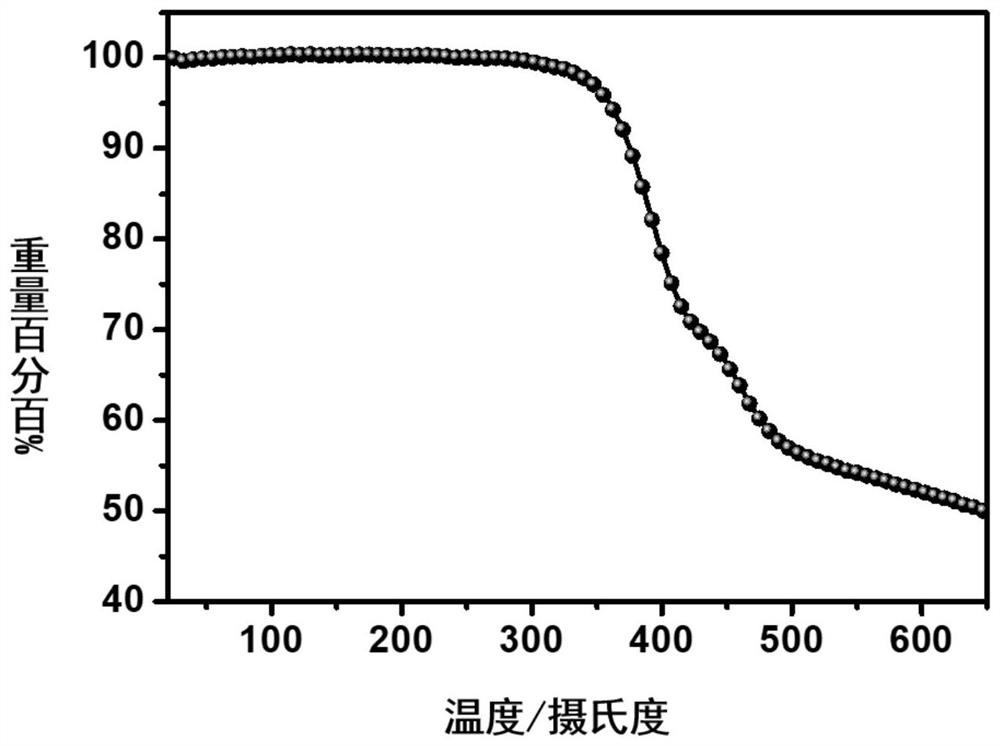Conjugated polymers based on pyrazine-2-carboxylate units and their preparation methods and applications
A conjugated polymer and carboxylate technology, which is applied in the molecular field, can solve the problems of low carrier electrode collection efficiency, mismatch between spectral response and solar radiation spectrum, and low energy conversion efficiency.
- Summary
- Abstract
- Description
- Claims
- Application Information
AI Technical Summary
Problems solved by technology
Method used
Image
Examples
preparation example Construction
[0094] The preparation method of the above-mentioned conjugated polymer based on pyrazine-2-carboxylate unit comprises the following steps: the compound shown in formula V and the compound shown in formula VI undergo a copolymerization reaction under the action of a catalyst to obtain formula I the indicated polymer;
[0095]
[0096] In formula V and formula VI, Ar 1 、Ar 2 、X 1 、X 2 , R 1 , R 2 , R 3 , R 4 , R 5 , R 6 , Y 1 , Y 2 and D define the same formula I.
[0097] Y in formula V is selected from boronic acid group, borate ester group, zinc halide group or trialkyltin group, and X in formula IV is selected from I, Br or Cl;
[0098] Wherein, the catalyst is [1,3-bis(diphenylphosphino)propane]dichloronickel(II), tetrakis(triphenylphosphine)palladium(0), [1,2-bis(diphenylphosphino) Any one of phosphino)ethane] nickel chloride (II), bis(dibenzylideneacetone) palladium (0), palladium chloride or palladium acetate; the boronic acid group is preferably 1,3,2-d...
Embodiment 1
[0106] 1.1 Synthesis of polymer PBDTF-PC.
[0107] The chemical reaction route diagram of the present embodiment is as follows, and concrete reaction steps and reaction conditions are as follows:
[0108]
[0109] In a 50mL two-necked round-bottomed flask, add 0.3mmol of bis-tin monomer M1 and 0.3mmol of bis-bromine monomer M2 and 10mL of anhydrous toluene. (PPh 3 ) 4 This was added to the flask as a catalyst, and the reaction mixture was purged with argon for an additional 30 minutes. The reaction mixture was stirred and heated to reflux under argon for 7 hours. After the polymerization, the reaction mixture was cooled to room temperature, then the polymer was settled in 100mL HPLC methanol, the solid was collected by filtration, and finally Soxhlet extraction was performed with methanol, n-hexane and chloroform of HPLC respectively, and the chloroform extract was concentrated Afterwards, the solid polymer PBDTF-PC was obtained by settling in HPLC methanol, and the sol...
Embodiment 2
[0123] 2.1 Synthesis of polymer PBDTC-PC.
[0124] The chemical reaction route diagram of the present embodiment is as follows, and concrete reaction steps and reaction conditions are as follows:
[0125]
[0126] In a 50mL two-necked round-bottomed flask, add 0.3mmol of bis-tin monomer M1 and 0.3mmol of bis-bromine monomer M2 and 10mL of anhydrous toluene. (PPh 3 ) 4 This was added to the flask as a catalyst, and the reaction mixture was purged with argon for an additional 30 minutes. The reaction mixture was stirred and heated to reflux under argon for 22 hours. After the polymerization, the reaction mixture was cooled to room temperature, then the polymer was settled in 100mL HPLC methanol, the solid was collected by filtration, and finally Soxhlet extraction was performed with methanol, n-hexane and chloroform of HPLC respectively, and the chloroform extract was concentrated Afterwards, the solid polymer PBDTC-PC was obtained by settling in HPLC methanol, and the so...
PUM
| Property | Measurement | Unit |
|---|---|---|
| dispersity | aaaaa | aaaaa |
| dispersity | aaaaa | aaaaa |
Abstract
Description
Claims
Application Information
 Login to View More
Login to View More - R&D
- Intellectual Property
- Life Sciences
- Materials
- Tech Scout
- Unparalleled Data Quality
- Higher Quality Content
- 60% Fewer Hallucinations
Browse by: Latest US Patents, China's latest patents, Technical Efficacy Thesaurus, Application Domain, Technology Topic, Popular Technical Reports.
© 2025 PatSnap. All rights reserved.Legal|Privacy policy|Modern Slavery Act Transparency Statement|Sitemap|About US| Contact US: help@patsnap.com



